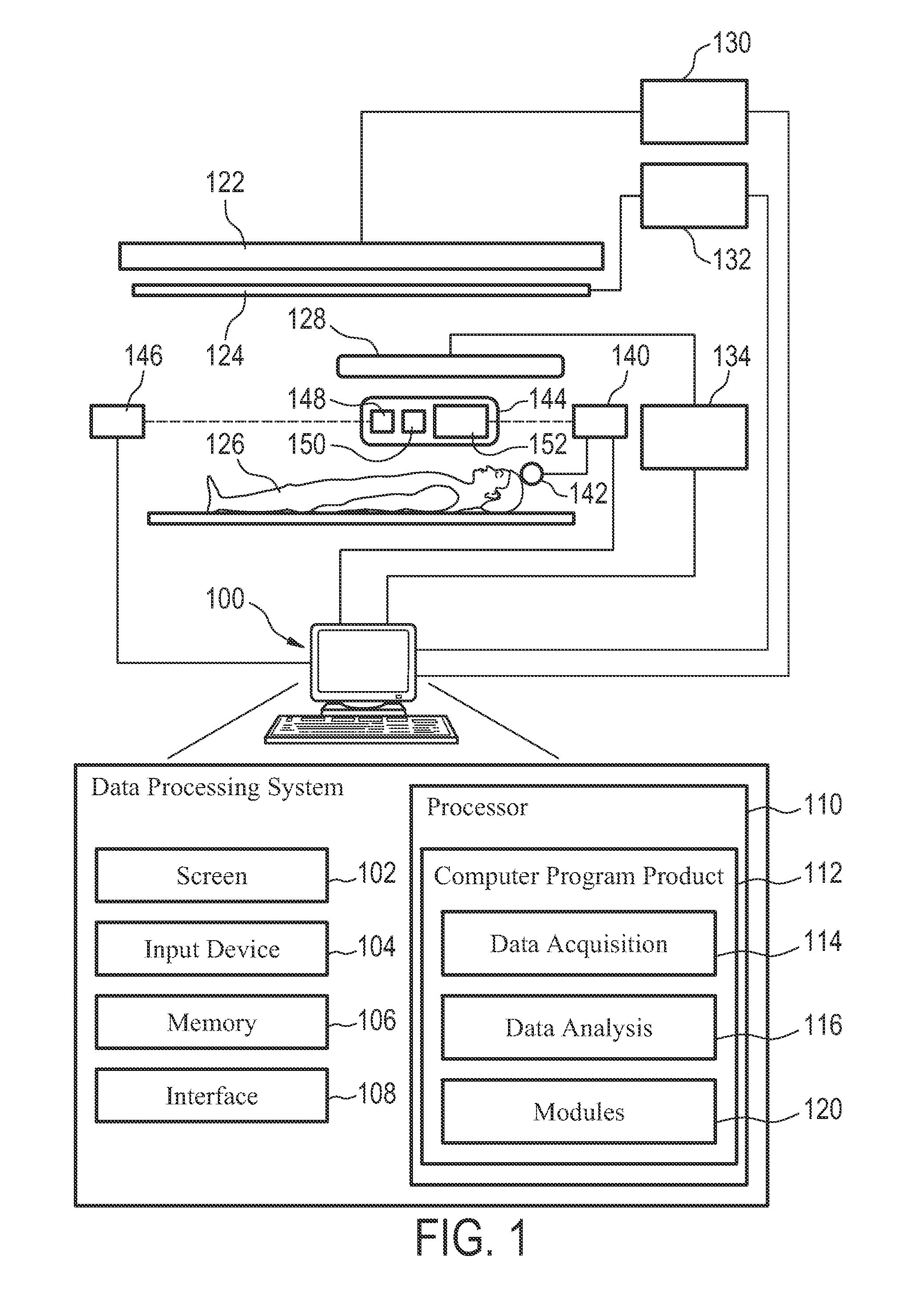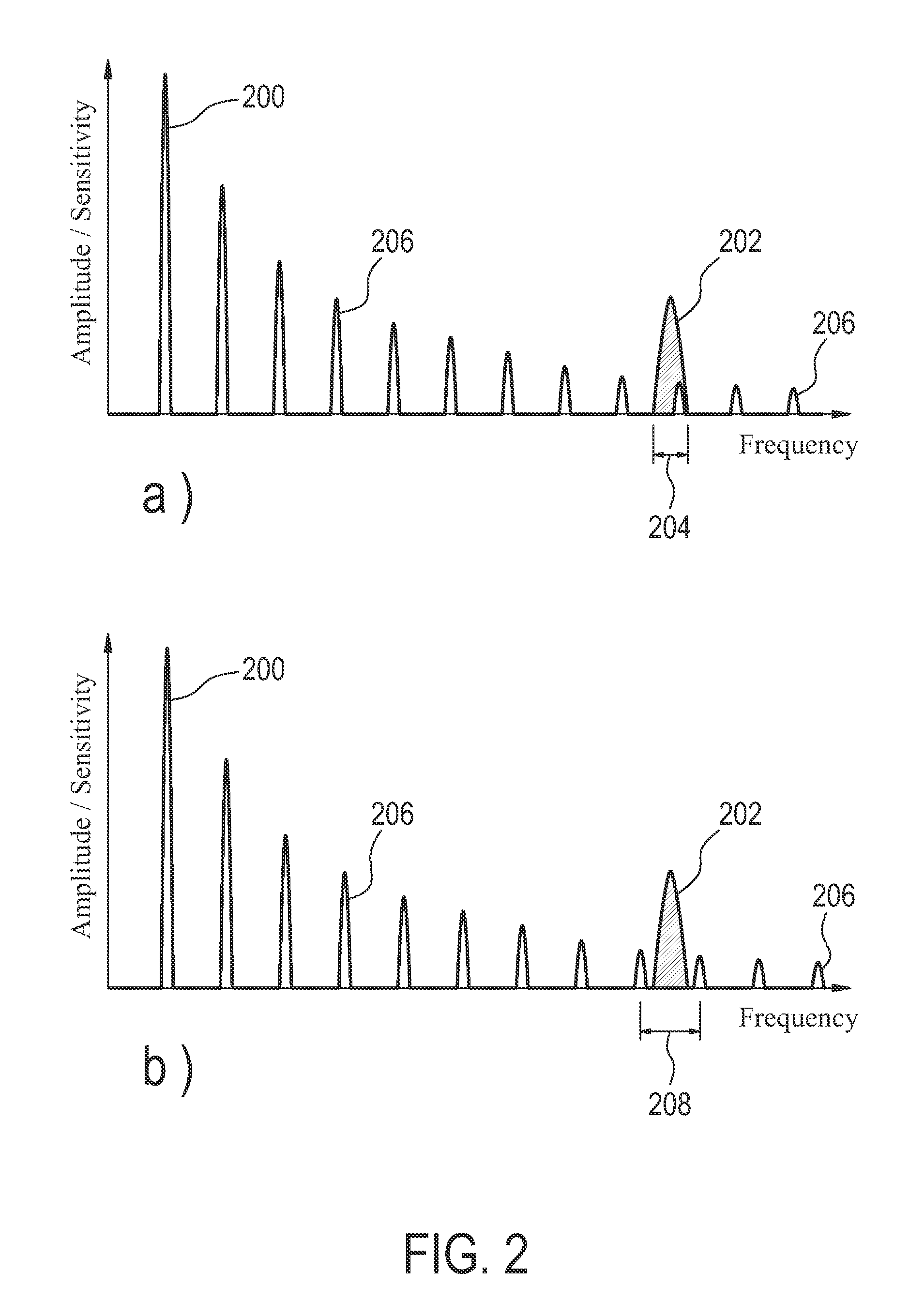Inductively powered electric component of an MRI apparatus
a technology of inductive power and electric components, which is applied in the direction of magnetic variable regulation, instruments, and using reradiation, etc., can solve the problems of affecting the patient, deteriorating image quality, and unwanted displacement of modules, so as to reduce the number of magnetic field lines, reduce the induced current, and achieve maximum electric power.
- Summary
- Abstract
- Description
- Claims
- Application Information
AI Technical Summary
Benefits of technology
Problems solved by technology
Method used
Image
Examples
Embodiment Construction
[0043]In the following similar elements are depicted by the same reference numerals.
[0044]FIG. 1 is a schematic illustrating an MRI system according to the invention. Only major components of a preferred MRI system which incorporate the present invention are shown in FIG. 1. The magnetic resonance imaging apparatus comprises a data processing system 100, wherein the data processing system 100 typically comprises a computer screen 102 and an input device 104. Such an input device could be for example a keyboard or a mouse. The MRI system further comprises a memory 106 and an interface 108. The interface 108 is adapted for communication and data exchange with typical hardware MRI components.
[0045]Typical hardware MRI components are for example a main field control unit 130 adapted for controlling the main field of the magnet 122. The interface 108 is also adapted to communicate with the gradient coil unit 132, wherein respective gradient coils 124 are preferably self shielded gradient...
PUM
 Login to View More
Login to View More Abstract
Description
Claims
Application Information
 Login to View More
Login to View More - R&D
- Intellectual Property
- Life Sciences
- Materials
- Tech Scout
- Unparalleled Data Quality
- Higher Quality Content
- 60% Fewer Hallucinations
Browse by: Latest US Patents, China's latest patents, Technical Efficacy Thesaurus, Application Domain, Technology Topic, Popular Technical Reports.
© 2025 PatSnap. All rights reserved.Legal|Privacy policy|Modern Slavery Act Transparency Statement|Sitemap|About US| Contact US: help@patsnap.com



